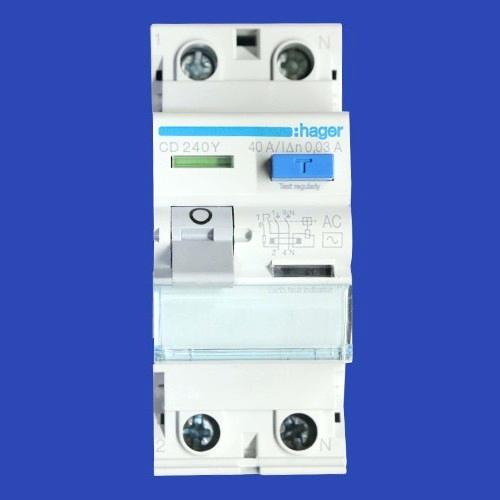
While electricity has become an indispensable component of our lives, the fact is, it comes with its own hazards to human life and property. Electrocution and fire being the two major risks associated with electricity, one cannot afford to be negligent when it comes to insulating equipment.
A Residual Current Circuit Breaker (RCCB) is an important safety measure when it comes to protection of electrical circuits. It is a current sensing device, which can automatically measure and disconnect the circuit whenever a fault occurs in the connected circuit or the current exceeds the rated sensitivity.
Purpose Of RCCB
Residual Current Circuit Breakers are aimed at protecting an individual from the risks of electrical shocks, electrocution and fires that are caused due to faulty wiring or earth faults.
RCCB is particularly useful in situations where there is a sudden earth fault occurring in the circuit.
e.g. A person accidentally comes in contact with an open live wire in the circuit.
In such situation, in absence of an RCCB in the circuit, an earth fault may occur and the person is at the risk of receiving an electrical shock.
However, if the same circuit is protected with RCCB, it will trip the circuit in fraction of a second thus preventing the person from receiving an electrical shock. Therefore, it is a good and safe practice to install RCCB in your electrical circuit.
How Does It Protects?
As explained above, RCCB is meant for protection from earth faults and associated risk to human life such as electrical shocks.
The underlying fundamental principle behind operation of RCCB is that in ideal situations the current flowing in to the circuit through live (hot) wire should be same as the returning current from the neutral.
In case of an earth fault, the current finds a passage to earth through accidental means (such as accidental contact with an open wire etc.). As a result the returning current from neutral is reduced. This differential in the current is also known as “Residual Current”.
RCCB is designed such way that it continuously senses and compares for difference (residual current value) in current values between the live and neutral wires. Any small change in the current value on account of such event would trigger the RCCB to trip off the circuit.
